Laban dance centre swept the critics off their feet when its gleaming facades were first unveiled. But for the school, poorly functioning services mean it's just a pretty face
- Designed to architectural acclaim, the operation of the award winning dance centre has been marred by poor performing services.
- Centre director Anthony Bowne fumes at lack of instruction on how to operate his new building that was incomplete on occupation.
- Occupancy survey reveals the extent of user dissatisfaction with only the building’s image to visitors rating as good.
- Engineering analysis includes in-depth energy consumption and potential areas for change/improvement.
When it opened in spring 2003 the Laban centre for contemporary dance was a spectacular addition to a rundown part of south east London. It was designed by Swiss architectural duo Herzog & de Meuron and it won RIBA's Stirling Prize for Architecture later that year. At the time the judges described it as an extraordinarily fine building that makes a major contribution to the artistic life of the community while acting as a catalyst to the regeneration of the whole area.
Now, four years later, this hyper-modern building clad in its translucent skin of polycarbonate still looks magnificent, if slightly surreal situated on the edge of muddy Deptford Creek and surrounded by decaying blocks of council flats, scrap yards and industrial warehouses.
But while students of architecture continue to coo about the building's daring design and debate the aesthetic merits of polycarbonate cladding, the occupants have been struggling to get the building to work. For the dance school the real issue over the past four years is not the relative merits, or otherwise, of tinted polycarbonate but the on-going effort to get the building's services to meet their needs. "The building's heating and ventilation was an absolute nightmare," says Anthony Bowne, Laban's director. "It is a highly complex system. We didn't know how to run it, and there was no one there to show us how to - they'd all done a runner."
There is no denying that with Laban the architect succeeded in creating a stunning architectural solution to the schools brief. This two-storey concrete-framed building has two shorter end walls interlinked by curving elevations. These curving facades are clad in strips of lime-, turquoise- and magenta-tinted semi-translucent polycarbonate panels, separated from the building by an 800 mm gap. Areas of clear glazing punctuate this plastic skin, framing the dancers within. During the day the facades have a cloudy, ephemeral appearance like a milky bubble. But at night the polycarbonate allows the entire building to glow with colour.
Behind this facade is an 8000 m2 interior, at the heart of which is a 300-seat raked theatre complete with fly-tower for storing stage backdrops. Surrounding this theatre the architect had packed in 13 lofty dance studios (two on the ground floor; the remainder on the first floor), a library, a public cafe, a physiotherapy unit, offices for support staff and various minor rooms all of which are accessible from the building's two main corridors.
However, when the dance school took possession of its spectacular new premises in Autumn 2002 its enthusiasm for the look of its new home soon became tempered by the knowledge that the main contractor, Ballast Southern, had gone into administration just as the building was reaching completion. According to Bowne this setback meant some snagging issues remained unresolved. "With the contractor going into administration after completion there was no one we could call back to the site," he explains.
The first major difficulty says Bowne was that for an occupant new to the building, there were no operation and maintenance manuals provided for the services so the school had to run the ventilation and heating services blind. "The reality for us was that there were too many variables so that when something was not working properly we did not know whether it was an issue with the one thing or a combination of different issues”. He says it has taken a couple of years to master the building services: "We spent two years where we had two winters where we were often too cold and two summers where we were often way too hot." And he correctly predicts, "I think it is under control now but I expect because of these earlier problems the user survey will get a poor reaction from the staff."
Reg Fitch is the facilities manager who has worked with the system from the outset. As a former banker, his financial background meant he had little experience to prepare him for the challenge that lay ahead. "If Laban was a hand of cards I'd been dealt I'd have thrown them straight back," he says.
Andy Keelin was the building services engineer for consultants Whitbybird. He admits the scheme had a "difficult birth" but he appears surprised by the client's complaints. He says the systems would have had to been working properly for the consultants to have signed them off on behalf of the client and a maintenance contractor would have to have been in place for a year after handover for the plant warranties to be valid. "We would have had to witness the systems working for sign-off at practical completion," he says. He does concede, however, that the systems would still need to be fine-tuned over their first year in operation.
Ballast Southern subcontracted the M&E services installation to Emcor. The contractor concurs with Whitbybird regarding the commissioning and snagging. In a statement to BSj it says: "All services were commissioned, witnessed and signed off in full by the main contractor and the building services consultant," and "final defects were signed off by the client at post practical completion handover stage". The contractor is also keen to make clear that any issues regarding Ballast's financial position "had no impact on the project for Emcor" and it is at a loss to explain the disappearance of the project's O&M manuals, which it states "were issued to Ballast Southern in a full and final state prior to practical completion".
Ventilation
Unusually on this project the outline design for the services was provided by the Swiss architects. Whitbybird then took the scheme and worked it up to detail design. Fresh air is supplied to the Laban building by two separate systems, one serving all the dance studios the other serving general areas such as corridors. Each system is fed from an air-handling unit concealed in a sunken well on the roof to preserve the architect's precious roof profile. But this arrangement has created problems for both air-handling units.
Squeezing the large double-deck air handling unit serving the dance studios into the tiny plant-well, so that its adjacent supply and exhaust louvres are about 1m from the wall, has caused short circuiting problems. As a result of the wall's proximity air from the units exhaust was found to be short-circuiting into the adjacent intake louvre. According to Fitch this resulted in a 2ºC increase in air temperature at the intake. It may also have reduced the amount of fresh air supplied to the building, which might go some way to explaining the "breathlessness" reported by some of the dancers. To overcome this problem, Fitch designed and fitted a vertical baffle plate, which he had fabricated locally, to separate the intake from the exhaust (see photographs).
A similar problem existed on the double deck air-handling unit serving the general areas. Here a curved cowl has had to be installed to direct hot exhaust air out of the pit and away from the intake below. Both problems would appear to have arisen as a result of the squeezing these large air handling units into such a small space. The consultants admit that this was a poor solution under the circumstances: "It is not an excuse, we should have dealt with that better," acknowledges Keelin.
The temperature and volume of supply air has also been an issue for the staff. The dance studios have underfloor heating combined with a displacement ventilation system balanced to achieve a positive pressure.
Control of the system relies on Fitch’s intervention. "We can react quickly to sort out an issue provided people tell me whether it is too hot or too cold," he says. It’s Fitch's eyes and ears keep the building services ticking over. He walks the building several times a day. If anything needs to be adjusted he does this through the building's Trend building management system. He says he finds it relatively easy to alter the control settings for the heating, ventilation and cooling. "The controls are very effective," he says.
It is in the smaller admin offices that staff are most vociferous about the environmental conditions - a situation no doubt exacerbated by the lack of individual control over temperature and daylight. According to Fitch, in many of these rooms the number of occupants has increased over time, and so has the demand on cooling and fresh air. The Registry, which is occupied by about 10 people has high solar gains, and Fitch has had to install additional fresh air supply ductwork to help air distribution in the room following complaints from the staff about air short-circuiting to the extract grille. Another problem for many of the administration staff is glare on their monitor screens as a result of the building's translucent external walls. Almost all the facades are fully glazed, either in clear glazing or translucent panels.
The consultants, however, are at a loss to explain why the system would still need to be adjusted after four years in operation. "The system has everything in place to enable it to be set up properly," says Keelin.
Lighting
Three courtyards bring daylight deep into the interior of the building's rectangular envelope. There are clear glazed partitions that enclose the dance studios and courtyards, so that you can see the dancers at work. One of the school's key requirements was that all the dance studios should be naturally lit. "Dance will often involve 30 hours of teaching and rehearsal in a studio, a week - so the quality of the environment was very critical to us," explains Bowne.
However daylight introduced issues such as glare. Before construction started, Arup Lighting spent a year working out the colour intensities and levels of light for the dance studios; the consultant even built a half-scale mock-up to test the various solutions. The mock-up also helped to conclude that white diffuse laminated double-glazing was the best glass treatment to soften and diffuse the light coming into the building through the facade to the studios. The solution appears to work well. However, the intensity of these luminous walls does make the students appear as silhouettes against the luminous walls making it difficult to see their facial expressions.
Control of the building's lighting does appear to be a problem. At night the building appears to glow from within. This is a result partly of the building's long hours of occupation - see Box: Energy analysis- and partly because the room lighting controls are not accessible to the building's occupants.
There was also a maintenance issue with the large 'pipe' lights, which were designed by Herzog & de Meuron and manufactured by Artemide for installation in the library and canteen. According to Fitch the fittings cost about £450 each, and are designed with a flexible stem to allow the designers to direct light to where it is required. However, in the canteen some fittings were within reach of the students who had their own ideas as to where the light should be directed, damaging the lamps in the process of re-direction. These fittings have had to be shortened to take them out of reach of the students.
When benchmarked against the similar schemes the building's energy consumption appears to be within acceptable limits - see box: Laban energy analysis. It is likely that some energy issues will be addressed in the future. In 2005, Laban merged with Trinity College of Music to form Trinity Laban. The building now falls under the combined college's FM department. "At the moment the only energy efficiency activity is to reduce the plant run times," says Fitch. "However, following the merger there are plans to monitor energy use more closely and to target those areas where consumption can be reduced further," he adds.
The need for a new home
By 1995 it had become clear that Laban dance school's success meant it had outgrown its previous premises. Laban had at that time become the largest school for contemporary dance in the world. It had 350 full-time students studying dance at all levels up to MA. However, it was based in an old primary school a few miles down the road in New Cross where many of the dance studios were dark, windowless spaces.
Laban worked with architect Burrell Foley Fischer to draw up a brief for a new centre. As part of the studies the designers visited dance centres in Hong Kong and Taiwan to see how others had met the challenge. Though Anthony Bowne, Laban's director, says the school largely knew what it wanted by assessing the shortcomings of the home it already had.
At the same time the local authority decided it needed a focus for the regeneration of the area. It offered the charity the two-acre site in Deptford at a price it could afford. In 1997, Swiss architect Herzog & de Meuron won the international architectural competition to design the dance centre's new home. "They were the only one of the six shortlisted practices to try to understand the philosophy of the organisation," says Bowne.
Laban energy analysis
Energy data for Laban was obtained from monthly utility bills provided by the facilities team, writes Roderic Bunn.
Electricity consumption is based on actual meter readings over nine months between April 2006 and March 2007. The missing three months were estimated by extrapolation, erring on the side of caution. Actual gas meter readings were available from October 2006 to March 2007. Extrapolated data was applied for the missing six months, based on trends shown in the known readings. Again, the estimates were conservative. The energy data was assessed to Stage B of the CIBSE TM22 Energy Assessment and Reporting Method.
Energy consumption was adjusted to the average degree days for the year (2172). Laban's extended operating hours were also taken into account. Laban is used very intensively, with normal weekday occupation between 07:00-22.00 h, followed by cleaning between 23:00-04:00 h. The building is open to students and the general public at weekends between 08:00 - 17:00 h, closing one hour earlier on Sundays. Of the approximate 1,570,487 kWh recorded for electricity, 250,648 kWh were recorded on the energy bills as a night rate.
Based on the stated internal floor area of 8203 m² (measured treated floor area was not available), adjusted electricity consumption for Laban came in at 192 kWh/m²/y, with adjusted gas consumption at 176 kWh/m²/y. Both these figures can be taken to be a good approximation. For carbon dioxide emissions, this translates as
115 kgCO2/m²/y, using TM22 default conversion factors of 0.46 for electricity and 0.19 for gas.
There is no easy means by which Laban can be benchmarked. The building is bespoke, and with 13 large dance studios, it is the largest of its kind in the UK.
The nearest available benchmark is that listed in Energy Consumption Guide 78: Energy Use in Sports and Recreation Buildings. ECON 78 gives typical and good practice energy consumption figures for a 1000 m² fitness studio with exercise studios, a health suite, a licensed bar and a cafe. But Laban is eight times larger than the benchmark building and considerably more complex with its performance theatre and dance studios. Nevertheless, against the ECON 78 benchmark, electricity consumption at Laban comes in around the typical level, with gas consumption better than ECON 78 good practice (176 kWh/m²/y compared with 201 kWh/m²/y) and one third the ECON 78 typical value (449 kWh/m²/y) - see Table 1.
Given that Laban is very much a tale of two buildings - the dance studios and a mixture of air-conditioned cellular and open plan offices - it is relevant to see how the Centre compares against the ECON 19 Energy Efficiency in Offices benchmark for a standard air-conditioned office. By this yardstick Laban's energy figures look rather less impressive (Table 2). Laban still performs better than typical for both gas and electricity, but worse against good practice. The carbon dioxide emissions of 115 kgCO2/m²/y is also above the ECON 19 typical benchmark of 111 kgCO2/m²/y for a standard air-conditioned office.
Unfortunately, no data was available to do a detailed energy breakdown by end-use.
Some of the building's systems evidently default to on. This is a consequence of extended hours of occupation, the intensive use of public areas seven days a week, and lack of local switching for services, notably the lighting. Despite good daylighting in many areas of the building, the lighting controls are not daylight-linked. High gas consumption may be due to the widespread application of underfloor heating in the dance studios and the need to maintain comfort conditions for the dancers over long hours of occupation.
The gas and electricity consumption for the catering facility is currently not metered. Post-occupancy studies regularly show that such catering facilities can account for a significant proportion of a building's energy consumption. Better control of kitchen ventilation and use of more energy-efficient cooking appliances could show savings.
Occupancy survey results
A Building Use Studies occupancy survey was carried out on 8 March, writes Roderic Bunn. About 80% of Laban's 45 permanent administrative and teaching were surveyed, with the exception of dance teachers engaged in teaching duties. Students vastly outnumber permanent staff - there can be between 300-350 people in the building on a normal day.
The figure below shows the summary results of the survey. Overall, the building's occupants rank the building as uncomfortable against the benchmarks on most criteria, with the exception of lighting and noise. The building is perceived to be uncomfortable in summer and winter, with corresponding negative scores for summer and winter air quality. Stuffiness and overheating in summer were common complaints.
Laban is also considered to be an unhealthy building by many occupants, with some occupants blaming the building for respiratory problems.
In common with many post-occupancy studies, Laban's occupants complain about insufficient storage. This is exacerbated by overcrowding in some offices. An office designed for five people is now occupied by 10 staff.
The building is extensively daylit, with large areas of semi-opaque glazing. As with other aspects of Laban, lighting is a tale of two extremes. Administrative staff using computers suffer from glare on screens. Occupants of other offices suffer little or no daylight. Those in offices without daylight (particularly north-facing offices) complain that electric lighting is always needed.
Laban is perceived to be a noisy working environment, with those working near the dance studios complaining of noise from musicians (practice rooms are often adjacent to offices). Many respondents expressed unhappiness with the building's extensive use of hard surfaces and lack of sound proofing, which some said was unsympathetic to their needs, and affected their ability to concentrate.
The air-conditioning system was also regarded by some staff as being noisy. The library staff reported that the library floors were loud underfoot, and that there was noise from the ramped corridor and from the bar downstairs.
Most staff perceive their productivity to be significantly compromised by excessive noise, glare, stuffiness and dryness.
Despite all this, occupants of Laban consider their building to have a strong visual impact, with a "good wow factor". Indeed, the building's image to visitors was the only criterion that respondents scored positively.
"It's beautiful and a work of art" said one respondent, "but we have to keep going outside for air." Another reported that: "It's nice to look at, but not friendly to work in," while another said: "It is very beautiful and fun to show school groups around, but not work or user-friendly."
Overall Laban is in the bottom 33% of the BUS benchmark dataset, which is disappointing given its cutting-edge design, its resulting iconic architectural status, its contribution to lifting a depressed area of London, and its premier role in the teaching of contemporary dance.
Downloads
Occupancy survey results
Other, Size 0 kb
Source
Building Sustainable Design
Postscript
Original print headline: "A disappointing performance" (Building Services Journal, June 2007)




















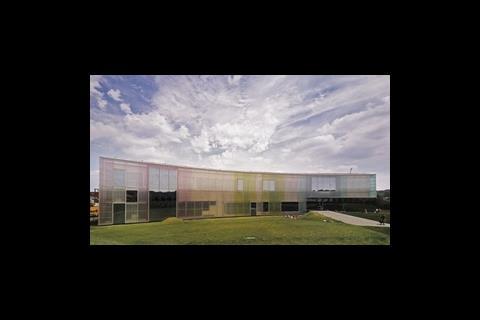
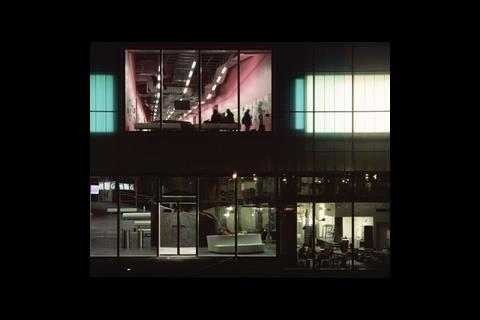
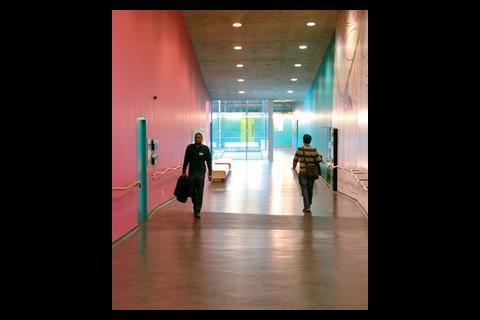
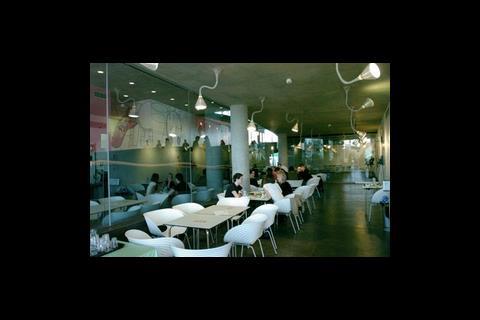


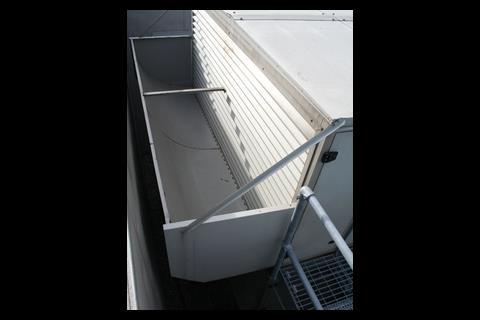
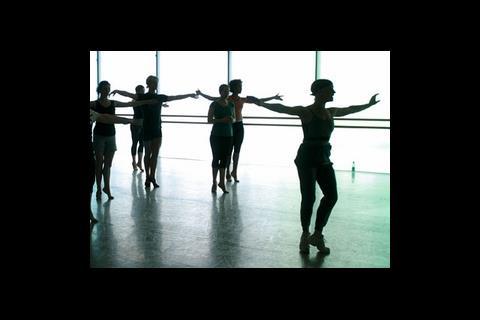


No comments yet